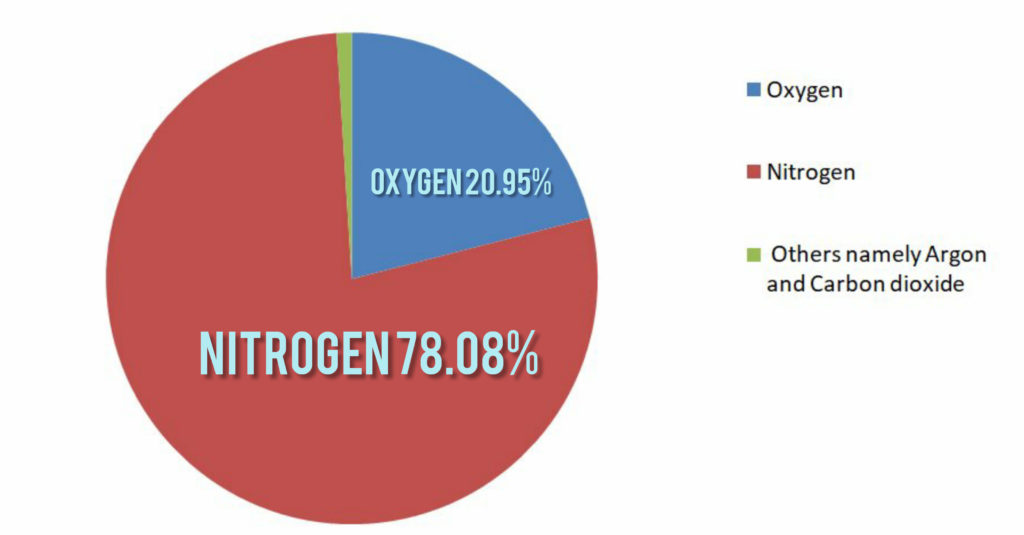The percentage of oxygen in the air is 20.95%. It is the second most prevalent gas in the atmosphere. Nitrogen is the most prevalent gas and forms 78.08% of the atmosphere. The rest is other gases mainly Argon (0.9340%) and Carbon dioxide (0.0410%).

Oxygen at high altitudes
We have often heard from people that as we gain elevation the Oxygen level decreases. However, this is not completely true. As we gain elevation, the percentage of oxygen in the air does not decrease. Rather the atmospheric pressure decreases, meaning there is less air per unit volume for us to breathe at higher elevations.
Acute mountain sickness commonly known as AMS is a common sickness experienced by people who are not able to acclimatize to lower atmospheric pressure at a higher elevation. Symptoms include headache, vomiting, dizziness, etc. If you are traveling to a higher elevation it is advised that you gain elevation at a slow rate.
Oxygen vs Ozone
Ozone is an unstable allotrope of oxygen. Although Ozone forms just 0.00006 % of the atmosphere, it is very important for the survival of life on Earth. Let’s first see some difference between diatomic Oxygen (Normal Oxygen) and Ozone.
- Oxygen molecules (O2) are made up of two atoms of Oxygen element while ozone molecules (O3) are made up of three atoms of oxygen.
- Diatomic oxygen is more stable than Ozone.
- Ozone is bluish in color while oxygen is colorless.
The ozone layer present in the stratosphere protects the Earth from the harmful ultraviolet radiations of the Sun. On the contrary, the Ozone present in the troposphere is considered a pollutant that damages plants and lungs.
Quick question
Which is the most prevalent gas on Venus?
Read more
- Layers of the atmosphere | Troposphere, Stratosphere, Mesosphere, etc.
- latitude and longitude, temperature variation with latitude
Answer to quick question
Carbon dioxide is the most prevalent gas on Venus and forms more than 96 % of Venus’s dense atmosphere.